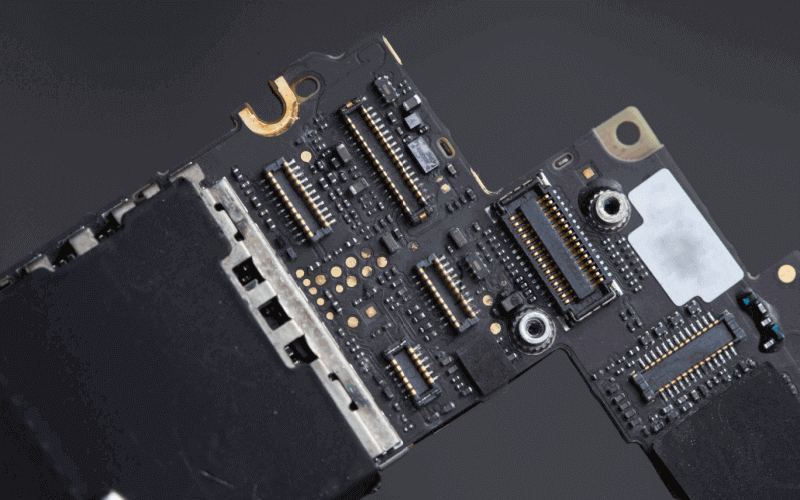Diving into the bustling realm of mobile gaming, a frequently pondered question surfaces: Exactly How Much RAM Does A Gaming Phone Need? For those freshly navigating the gaming domain, the ideal benchmark might be unexpected. Let’s demystify it: the sweet spot is 16GB. With 16GB, you’re not just obtaining a significant boost in performance relative to the earlier norm of 8GB, but also ensuring seamless multitasking capabilities. Imagine juggling games and apps in tandem without a shred of lag — that’s the magic of optimal RAM. Join me as we unravel this figure’s significance and its ramifications for the gaming aficionados out there.
Why RAM Matters in Gaming Phones
Known to many as RAM, Random Access Memory essentially acts as the temporary storage powerhouse of any device. Distinct from regular storage, RAM is ephemeral, holding onto data the processor is actively handling. To draw an analogy, envision RAM as a workspace: a larger workspace lets you manage more tasks seamlessly.
Venturing into the gaming phone spectrum, the prominence of RAM is undeniable. It’s the bedrock of game load speeds. Ample RAM translates to swift game startups and seamless transitions throughout. Beyond this, RAM paves the way for multitasking. Ever thought about toggling between a gaming session and a quick message check? That’s where RAM steps in.
But the true test is in-game visualization. Intricate games banking on high-end graphics lean on RAM for flawless rendering of scenarios, avatars, and live animations. Put simply, superior RAM equals a captivating and immersive gaming journey.
Breaking Down RAM Needs by Game Types
Games, in their vast array, come with diverse requirements, and RAM is no exception to this. Broadly speaking, the demand varies based on the sophistication and visual quality of the game.
Enter the domain of lightweight games. Picture games with a simplistic design and mechanics, like “Candy Crush” or “Among Us”. For these, a RAM between 2GB and 4GB usually does the trick, ensuring lag-free gameplay.
Contrast this with the realm of graphic-heavy 3D games. Titles such as “PUBG Mobile” or “Asphalt 9: Legends” come to mind. They promise graphics on par with consoles, necessitating phones to be robust in their RAM department. While 6GB might be a starting point, the earlier mentioned 16GB remains the go-to for comprehensive performance and keeping up with future game developments.
In summary, while basic games are lenient, demanding 3D games up the ante. Armed with this knowledge, gamers can smartly choose their next phone, ensuring no compromise on their gameplay experience.
How Other Phone Specs Interact with RAM
Processor (CPU):
- The processor is the brain of the device.
- It deciphers game logic, player commands, and AI dynamics.
- A fast processor, in combination with adequate RAM, is essential for quick game reactions.
Graphics Processing Unit (GPU):
- This champ is tasked with crafting visuals, forming characters, and building environments.
- The right RAM ensures the GPU can swiftly access essential game data, making for uninterrupted graphic displays.
Storage Speeds:
- Today’s smartphones leverage advanced storage types like NVMe and UFS 3.1.
- Accelerated storage equates to instant game data access
- curbing game loading durations and in-play asset lags.
Software Optimization:
- The role of the operating system is to astutely govern RAM usage.
- This ensures memory isn’t squandered on background tasks.
- Game creators also finetune their creations to maximize RAM utility.
To wrap this section, it’s evident that RAM shines brightest when embedded in a balanced ecosystem of sturdy hardware and adept software.
The Evolution of RAM in Mobile Devices
In the infancy of smartphones, think early iterations of iPhones or Androids, a modest 512MB to 1GB of RAM was the norm. This sufficed for rudimentary apps and tasks they were designed for.
Then came the app boom and multitasking surge. Circa mid-2010s, models like the Samsung Galaxy S4 began showcasing a 2GB RAM, aligning with the growing appetite for diverse apps and multitasking capabilities.
Flash forward to the late 2010s, marked by an explosion in mobile gaming and demanding applications. Here, devices started showcasing a 6GB to 8GB RAM range, with elite models even touching the 12GB mark.
Fast forward to today’s flagship devices. It’s now a regular sight to see top-tier phones, especially those tailored for gaming, brandishing a 16GB RAM, a testament to their commitment to fluidity and staying ahead of the curve.
Tracing this trajectory, a pattern emerges: as mobile activities grow in complexity, flagship phones reciprocate with augmented RAM, ensuring users always stay in the fast lane.
Is There Such a Thing as Too Much RAM?
In our relentless pursuit of top-tier performance, it’s worth pondering: is there a ceiling to the RAM a phone should possess? While a higher RAM often implies enhanced multitasking and streamlined operations, there’s a juncture where the added RAM may not bring tangible benefits. A phone parading a 32GB RAM may exude tech supremacy, but for many, the perceptible advantages over a 16GB variant could be scanty.
Moreover, slotting in an overabundance of RAM has ramifications on power usage. An uptick in active memory modules translates to heightened energy consumption, potentially impacting battery endurance, particularly if a plethora of apps are perpetually active.
Price is another contender. Beefed-up RAM configurations can skyrocket a phone’s cost. This may lead to consumers shelling out a hefty premium for added RAM that their daily smartphone chores don’t necessarily demand.
And then there’s the concept of diminishing returns in the RAM realm. The performance surge observed when migrating from 4GB to 8GB is stark. However, the relative uplift from 16GB to 32GB may be subtle.
In summation, while chasing top specs has its allure, it’s prudent for users to gauge their authentic requirements and pinpoint the equilibrium between performance and pragmatic needs.
Future Predictions: What’s Next for Gaming Phones?
On the brink of a fresh epoch in mobile gaming, envisioning the forthcoming tech marvels is irresistibly enticing. The trajectory of RAM in gaming phones is anticipated to mirror the progression of game design. As upcoming mobile games inch closer to the visual and operational caliber of PCs or consoles, the clamor for elevated RAM will be inescapable.
In addition, games rooted in augmented reality (AR) and virtual reality (VR) are swiftly gaining momentum. Such immersive experiences mandate swift data fetches and vast multitasking capabilities, thrusting RAM into the spotlight even more.
Add to this mix the impending integration of AI and machine learning in gaming. This introduces smarter NPC interactions, fluid story arcs, and personalized difficulty tiers, all of which will amplify RAM requisites.
Ultimately, as the horizons of mobile gaming broaden, spurred by tech leaps and creative ambition, gaming phones will concurrently advance, with RAM as an indispensable ally in this journey.
Conclusion & Recommendations
Navigating the vibrant realm of mobile gaming and in search of the Best Mobile Gaming Processor, the benchmark for RAM currently gravitates towards 16GB, presenting gamers with the quintessential mix of performance flair and multitasking finesse. However, the tech landscape is vast and diverse.
Gamers, both seasoned and novices, must introspect on their distinct gaming goals, whether they lean towards laid-back games or adrenaline-pumping AR escapades. The essence is to identify a device that not just caters to your gaming cravings but is also in harmony with your financial parameters.
To encapsulate, crafting the perfect gaming odyssey is about harmonizing technical specifications with individual aspirations, ensuring uninterrupted gameplay without stretching your resources.






Pingback: Top 5 Best Mobile Gaming Processors: Review & Comparison